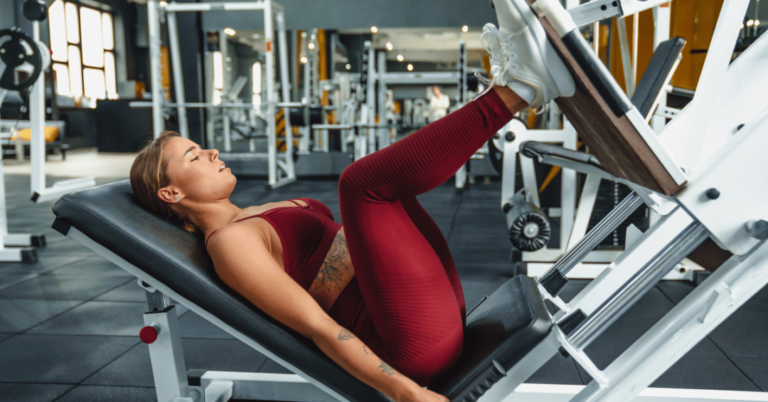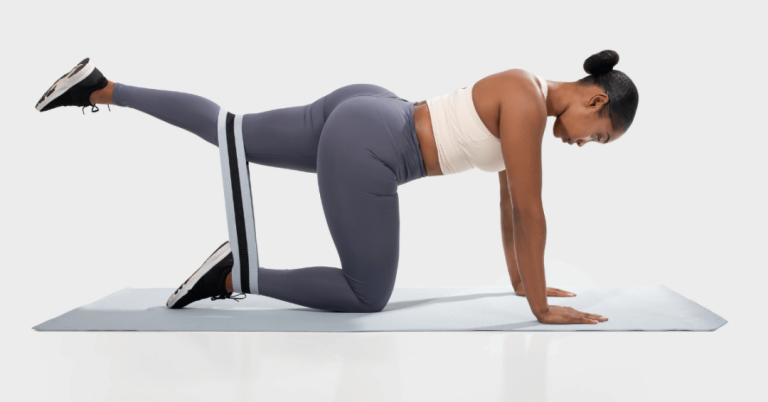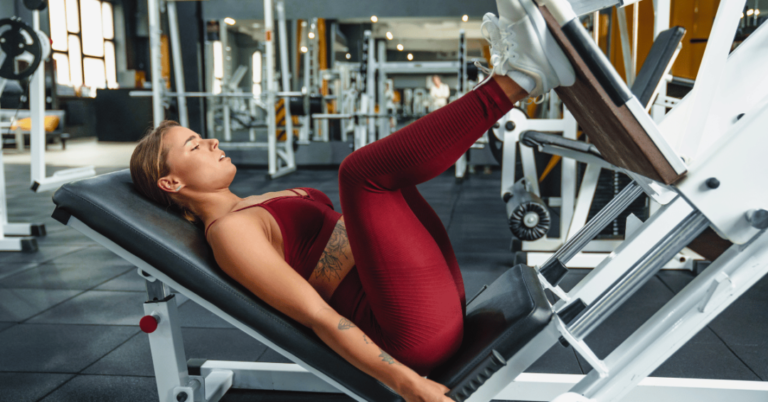Glute Equipment: Choosing Glute Machine For Home Gym
Some links on this page are affiliate links (including Amazon Associate links) which means that, if you choose to make a purchase, we may earn a small commission at no extra cost to you. We greatly appreciate your support!
Are you ready to take your booty-building game to the next level – right from the comfort of your own home? You’re in luck! According to a recent fitness industry report, home gym equipment sales have skyrocketed by 170% since 2020. Among the most popular items? Glute machines! But with so many options out there, how do you choose the right one for your needs and space? Don’t worry, we’ve got your back (and your backside)! In this guide, we’ll walk you through everything you need to know to pick the perfect glute machine for your home gym. Get ready to transform your glutes and boost your confidence without ever stepping foot in a crowded gym again!
Types Of Glute Machines For Home Use
When it comes to building strong, sculpted glutes at home, having the right equipment can make all the difference. Whether you’re just starting your fitness journey or you’re a seasoned gym-goer, there’s a variety of machines that can help you target those glute muscles effectively. Let’s take a look at some popular options:
1. Cable Machines with Glute-Specific Attachments
Cable machines are a versatile piece of equipment that can be used for a wide range of exercises. With the right attachments, they’re fantastic for working your glutes. Attachments like ankle straps allow you to perform kickbacks and side leg lifts, which are great for isolating and strengthening your glutes. Plus, you can easily adjust the weight to match your fitness level, making this option ideal for beginners and advanced users alike.
2. Smith Machines for Squats and Lunges
Smith machines are a staple in many home gyms, and they’re excellent for targeting your glutes. This machine helps guide your movements, making exercises like squats and lunges safer and more controlled. The added stability means you can focus on squeezing your glutes with each rep. Squats and lunges are two of the best exercises for building glute strength, and the Smith machine makes them easier to perform with proper form.
3. Hip Thrust Machines
Hip thrusts are a powerhouse move for glute development, and having a machine designed specifically for this exercise can take your workouts to the next level. Hip thrust machines allow you to perform the movement with added weight, which increases the intensity and effectiveness of the exercise. These machines provide the perfect setup to target your glutes directly and are a must-have for anyone serious about glute training.
4. Glute-Ham Developers (GHDs)
Glute-ham developers, or GHDs, are another fantastic piece of equipment for home use. These machines target both your glutes and hamstrings, making them great for developing lower body strength. GHDs allow you to perform exercises like glute-ham raises and back extensions, which are excellent for building muscle and improving overall glute strength. They’re a bit larger, but if you have the space, they’re worth considering.
5. Adjustable Benches with Barbell Setups
An adjustable bench paired with a barbell is a simple yet effective setup for working your glutes. With this combination, you can perform exercises like barbell hip thrusts and glute bridges. The bench provides the support you need, while the barbell adds resistance to challenge your muscles. This setup is highly customizable, allowing you to adjust the weight and bench angle to suit your workout needs.
6. Resistance Band Systems
Resistance bands are a versatile and affordable option for glute training. These bands can be used on their own or in combination with other equipment to add extra resistance to your workouts. You can use them for exercises like kickbacks, clamshells, and side-steps, all of which target the glutes. Resistance bands are great for home gyms because they take up minimal space and can be easily stored when not in use.
7. Multi-Functional Glute Bridges and Kickback Machines
For those looking for an all-in-one solution, multi-functional machines that combine glute bridges and kickbacks are a great choice. These machines are specifically designed to target the glutes, allowing you to perform these key exercises with proper form and added resistance. They’re compact, making them a good fit for smaller home gyms, and they offer a dedicated way to focus on glute training.
Summary
With these types of glute machines, you can create an effective home workout routine that helps you build strength, tone your muscles, and achieve your fitness goals. Whether you choose one or a combination of these options, your glutes will be well on their way to becoming stronger and more sculpted.
Factors To Consider When Choosing A Glute Machine
Choosing the right glute machine for your home gym involves more than just picking the one that looks the coolest. There are several important factors to think about to make sure you’re getting the best fit for your space, budget, and workout needs. Let’s break it down:
1. Available Space in Your Home Gym
First things first—how much space do you have? Some glute machines, like hip thrust machines or Smith machines, can take up a lot of room. If you’re working with a smaller space, you might want to consider more compact options, like resistance band systems or adjustable benches. Measure your available area before buying anything to ensure you’re not cramming your gym or blocking other equipment.
2. Budget Constraints
Your budget is another key factor. Glute machines can range from budget-friendly resistance bands to more expensive, multi-functional machines. Think about what you’re willing to spend and look for options within that range. Remember, more expensive doesn’t always mean better—there are plenty of affordable machines that can get the job done effectively.
3. Versatility and Multi-Functionality
If you’re looking to get the most bang for your buck, consider machines that offer versatility and multi-functionality. Some machines, like cable machines or adjustable benches with barbell setups, allow you to perform a variety of exercises beyond just glute workouts. This can save you money and space, as you won’t need to buy multiple pieces of equipment.
4. Resistance Type (Weight Plates, Cables, Bands)
Different machines use different types of resistance, such as weight plates, cables, or bands. Each type offers a different feel and challenge during your workouts. For example, weight plates provide a more traditional strength training experience, while resistance bands offer a smoother, more controlled motion. Think about which type of resistance you prefer and what aligns with your fitness goals.
5. Adjustability for Different Body Sizes and Exercise Variations
Adjustability is important, especially if multiple people will be using the machine or if you want to perform a variety of exercises. Look for machines that allow you to adjust the height, angle, or resistance level to accommodate different body sizes and exercise variations. This ensures that everyone in your household can use the machine comfortably and effectively.
6. Durability and Build Quality
You want a machine that will last, so durability and build quality are crucial. Check the materials used and the overall construction of the machine. Sturdy machines made from high-quality materials might cost a bit more upfront, but they’re likely to be more durable and reliable in the long run, saving you from having to replace them frequently.
7. Noise Levels During Operation
If you live in an apartment or have family members nearby while you work out, noise levels can be a big consideration. Some machines, especially those with weight stacks or metal parts, can be quite loud during use. If noise is a concern, look for machines that are known for their quieter operation, or consider options like resistance bands that are virtually silent.
8. User Reviews and Ratings
Finally, before you make a purchase, it’s always a good idea to check out user reviews and ratings. These can provide valuable insights into the machine’s performance, durability, and overall satisfaction from other users. Look for machines with high ratings and read both the positive and negative reviews to get a balanced view. This can help you avoid potential pitfalls and choose a machine that’s well-loved by others.
Summary
By considering these factors, you can find the perfect glute machine that fits your home gym, budget, and fitness needs. With the right equipment, you’ll be well on your way to achieving those glute gains!
Top Glute Machines For Small Spaces
If you’re working with limited space in your home gym, you don’t have to sacrifice your glute workouts. There are plenty of glute machines designed specifically for small spaces that still pack a punch. Here are some top picks that will help you build strong glutes without taking up too much room:
1. Compact Cable Machines with Glute Attachments
Cable machines are known for their versatility, and the compact versions are perfect for small spaces. These machines often come with glute-specific attachments, like ankle straps, so you can perform exercises like kickbacks and leg lifts. Even though they’re smaller, they still offer plenty of resistance to challenge your muscles. Plus, they can often be tucked into a corner or against a wall when not in use, keeping your gym area neat and tidy.
2. Foldable Smith Machines
Smith machines are great for squats, lunges, and other glute exercises, but they can be bulky. Luckily, there are foldable versions designed for smaller spaces. These machines offer the same stability and guided movements as traditional Smith machines but can be folded up when you’re done. This makes them an excellent choice for home gyms where space is at a premium.
3. Portable Resistance Band Systems
Resistance bands are the ultimate space-saver. They take up almost no space, are easy to store, and can be used for a variety of glute exercises like kickbacks, clamshells, and squats. You can anchor them to a door, a sturdy piece of furniture, or use them with a portable base. Because they’re so light and portable, you can even take them with you when traveling, ensuring you never miss a workout.
4. Space-Saving Hip Thrust Benches
Hip thrusts are one of the best exercises for targeting your glutes, and a dedicated hip thrust bench can make them even more effective. Look for space-saving models that are designed to be compact or foldable. These benches are sturdy enough to support your workout but can easily be stored away when not in use. Some models also come with built-in storage for your weights or resistance bands, helping you keep your gym organized.
5. Multi-Functional Glute Bridges that Store Easily
Multi-functional machines that allow you to perform glute bridges and other exercises are another great option for small spaces. These machines often combine several exercises into one compact unit, so you get more variety without needing multiple pieces of equipment. Look for models that are easy to store, like those with foldable designs or wheels for easy movement. They provide an effective workout while taking up minimal space.
Summary
With these space-saving glute machines, you can enjoy a full, effective glute workout without overcrowding your home gym. Whether you opt for compact cable machines, foldable Smith machines, or portable resistance bands, you’ll have everything you need to build strong, toned glutes right at home.
Budget-Friendly Glute Machine Options
You don’t need to break the bank to build strong glutes at home. There are plenty of affordable options that can help you achieve your fitness goals without costing a fortune. Here are some budget-friendly glute machine alternatives that still deliver great results:
1. Resistance Band Systems with Door Anchors
Resistance bands are one of the most cost-effective tools for glute training. Paired with a door anchor, you can easily perform a variety of glute-focused exercises like kickbacks, side leg lifts, and even squats. These bands come in different resistance levels, so you can start light and increase the challenge as you get stronger. Plus, they’re super portable and take up almost no space, making them perfect for home workouts.
2. Adjustable Step Platforms for Step-Ups
Step-ups are a fantastic exercise for targeting your glutes, and an adjustable step platform is a budget-friendly way to do them at home. These platforms can be set to different heights, allowing you to customize the difficulty of your workout. You can also use them for other exercises like lunges or elevated bridges, making them a versatile addition to your home gym.
3. Glute Bridge and Hip Thrust Pads
If you’re a fan of glute bridges and hip thrusts, a padded cushion can make these exercises more comfortable and effective. These pads are designed to protect your hips and lower back from the pressure of weights, allowing you to focus on your form and muscle engagement. They’re affordable and can be used with a bench or even on the floor, making them a simple but useful tool for glute training.
4. Ankle Strap Cable Attachments for Existing Equipment
If you already have a cable machine or any equipment with cables, adding ankle strap attachments is a cost-effective way to target your glutes. These straps let you perform exercises like cable kickbacks and side leg lifts, which are excellent for glute development. They’re inexpensive and can add a whole new range of exercises to your existing setup without needing to buy a new machine.
5. DIY Glute Machine Alternatives
If you’re handy and like a good DIY project, there are plenty of ways to create your own glute training tools at home. For example, you can use a sturdy chair or bench for step-ups and glute bridges, or fill a backpack with books to add weight to your squats. Resistance bands can also be anchored to heavy furniture if you don’t have a door anchor. These DIY alternatives are practically free and can still give you a great workout.
Summary
With these budget-friendly options, you can build and tone your glutes without spending a lot of money. Whether you invest in some basic equipment like resistance bands or get creative with DIY solutions, you can achieve your fitness goals right from the comfort of your home.
How To Incorporate Your Glute Machine Into A Workout Routine
Once you’ve got your glute machine set up, it’s time to put it to good use! Incorporating it into your workout routine can help you build strong, toned glutes while also improving your overall lower body strength. Here’s how to make the most of your glute machine:
Sample Glute Workout Plans for Beginners
If you’re new to glute training, start with a simple workout plan that targets all the key muscles. Here’s a sample routine you can follow:
- Glute Bridges (using a glute bridge pad): 3 sets of 15 reps
- Cable Kickbacks (with ankle strap attachments): 3 sets of 12 reps per leg
- Step-Ups (using an adjustable step platform): 3 sets of 10 reps per leg
- Resistance Band Squats (using a resistance band system): 3 sets of 15 reps
This routine is designed to hit your glutes from different angles, helping you build strength and shape your muscles. Start with this plan, and as you get more comfortable, you can add more exercises or increase the difficulty.
Proper Form and Technique Tips for Common Exercises
Proper form is crucial for getting the most out of your glute exercises and avoiding injury. Here are some tips for common glute machine exercises:
- Glute Bridges: Keep your feet flat on the floor and your knees bent. Lift your hips towards the ceiling, squeezing your glutes at the top. Avoid arching your lower back—your body should form a straight line from shoulders to knees.
- Cable Kickbacks: Stand facing the machine, with the ankle strap attached to one foot. Keep your core tight and back straight as you kick your leg back and up, focusing on engaging your glutes. Avoid swinging your leg—control the movement both up and down.
- Step-Ups: Place your entire foot on the step platform. Push through your heel to lift yourself up, bringing the other foot to the step. Step down with control, avoiding any jerky movements.
Practicing proper form not only helps you target your glutes more effectively but also reduces the risk of injury.
Frequency and Volume Recommendations for Optimal Results
For the best results, aim to train your glutes 2-3 times per week. Each workout should include about 3-4 different exercises, with 3 sets per exercise. If you’re just starting out, stick to around 10-15 reps per set. As you get stronger, you can increase the number of sets or add more weight to challenge your muscles further.
Remember to give your glutes time to recover between workouts—muscle growth happens during rest, not just during exercise.
Combining Glute Machine Exercises with Other Lower Body Workouts
While glute machines are fantastic for targeting your glutes, it’s important to balance your workout by including other lower body exercises. Combining your glute machine routine with exercises like lunges, deadlifts, and leg presses can help you build overall leg strength and stability.
For example, after completing your glute machine exercises, you could do a set of lunges or leg presses to further work your quads and hamstrings. This well-rounded approach ensures that all the muscles in your lower body are getting the attention they need.
Progressive Overload Strategies for Continued Growth
To keep your glute muscles growing, you need to progressively increase the challenge over time—a concept known as progressive overload. Here are a few ways to do that:
- Increase Resistance: Gradually add more weight or resistance to your exercises. For example, if you’re using resistance bands, switch to a heavier band over time.
- Add More Sets or Reps: As your strength improves, increase the number of sets or reps you’re doing. If you started with 3 sets of 12 reps, try doing 4 sets or aiming for 15 reps.
- Vary Your Exercises: Mix up your routine by adding new exercises or changing the order of your current ones. This keeps your muscles guessing and encourages growth.
By following these strategies, you’ll continue to make progress and achieve stronger, more defined glutes over time.
Summary
Incorporating your glute machine into a balanced workout routine, practicing proper form, and gradually increasing the intensity will help you build the glutes you’re aiming for. Stay consistent, and you’ll see the results of your hard work!
Conclusion
Choosing the right glute machine for your home gym doesn’t have to be a pain in the… well, you know! By considering factors like space, budget, and your fitness goals, you can find the perfect equipment to help you build the strong, shapely glutes you’ve always wanted. Remember, consistency is key – so pick a machine that you’ll love using regularly. Whether you opt for a versatile cable system, a dedicated hip thrust machine, or a budget-friendly resistance band setup, you’re now equipped with the knowledge to make an informed decision. So what are you waiting for? It’s time to bring the booty-building power of the gym right to your living room. Your glutes will thank you, and soon enough, you’ll be turning heads and boosting your confidence with every step. Get ready to unleash your glute potential – right from the comfort of home!





